Worksheets for Teachers
Did someone say printable worksheets? From year 1 maths worksheets to reading comprehension worksheets to printables for kindergarten and beyond, our collection of teacher-created teaching tools is ready to make learning fun and engaging for your students in all subject areas and on all primary year levels.
Explore printable activities, free worksheets, homework sheets and more — all aligned to the Australian curriculum and all created by teachers, for teachers just like you!
Teach Starter worksheets undergo a careful review process by our expert teacher team to ensure they're ready for your lesson plans ... and your students! Best of all, you know each printable is designed with the goal of turning on that lightbulb over your students' heads and producing more of those 'aha!' moments in the classroom!
Curious about how to make worksheets more engaging? Or maybe you're just wondering how worksheets became a tool used in schools? Read on for a primer from our teacher team!
Why Do Teachers Use Worksheets?
Worksheets are an important part of any teacher's toolkit — and yes, we say part because we believe in the importance of hands-on learning too (explore our full collection for plenty of student-led activities!) — but do you ever wonder how they ended up being so ubiquitous?
It was back in the mid-20th century that worksheets started to take hold in education.
The concept of individualised instruction was gaining traction, and educators recognised the need to tailor learning experiences to students' unique abilities, interests and learning styles.
Worksheets started to emerge because they were a means to provide students with both individualised practice and reinforcement of skills. Psychologists like Jean Piaget (you may know him best for his theories on children's cognitive development?) played a role here. The Swiss psychologist suggested teachers should be providing their students with materials that would advance their thinking, and worksheets offer a means for students to assess their own learning.
The real win for worksheets, however, was the invention of the photocopy machine! It made it easy for this supplemental tool to spread like wildfire!
How Do You Make Worksheets Engaging?
You already know educational printables are a beneficial learning tool. They enable students to work independently, practising and applying the concepts they've been learning in your classroom.
So how do you keep them from putting your students in boxes?
At Teach Starter, our worksheets aren't 'just worksheets.' Our expert teacher team works every day to create the tools you need to create impactful classroom experiences. That means our teacher team creates our school worksheets specifically to engage students with eye-catching graphics and creative formats. Here are some of their tips to ensure worksheets are used effectively in the classroom — and truly help engage your students!
- Use worksheets as just part of your toolbox. These are great tools to support classroom instruction and provide independent practise, and they should be balanced with a mix of other teaching tools!
- Mix up your worksheet types. Teach Starter's cut-and-paste worksheets, for example, add an interactive element to help hold students' attention.
- Encourage students to doodle. Doodle notes have taken education by storm in recent years as the visual note-taking method has been proven to improve students' focus and memory. Apply those benefits to your worksheets, and you may be surprised by how it pulls kids' attention to the page!
- Add plastic sleeves. Slipping worksheets into plastic sleeves and allow students to use wipe-away pens on the sleeves is a good way to extend the life of a worksheet — and it adds and element of fun for kids who love the chance to use pens!
- Use digital worksheets. Allow students to fill out their worksheets on classroom tablets as a means to add an extra level of engagement.
It's Not Just a Worksheet
The key to effective worksheets comes down to how you use them — a balanced approach to education combines worksheets with other instructional strategies — from hands-on activities to group work to project-based learning.
So what can you get from worksheets?
Consider this — early years students can work on their fine motor skills with our mini books, cut-and-paste worksheets and more while their upper years peers get pulled into the fun of vocabulary fun with word searches and crossword puzzle worksheets. Printable puzzles that engage students in the form of a brain game and colour by worksheets that bring art elements into maths and reading.
Worksheets also provide the opportunity for formative assessment and give your students a chance to practice problem-solving while they work independently.
- Plus Plan
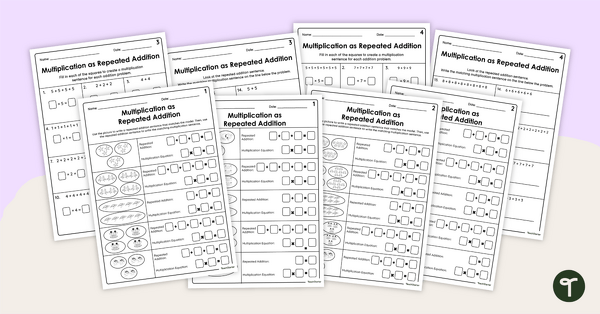
Multiplication as Repeated Addition Worksheet Pack
Strengthen student understanding of multiplication and repeated addition with this worksheet pack designed for year 2 and 3 students.
- Free Plan
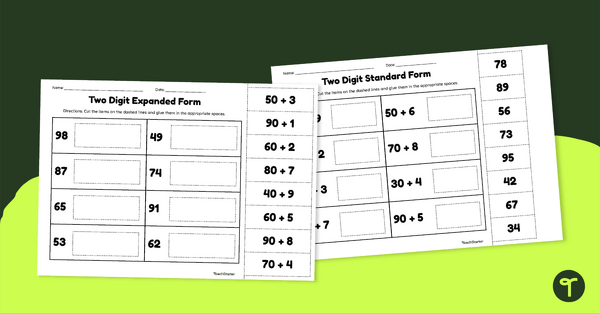
2-Digit Numbers in Expanded Form Worksheet
Explore two-digit numbers in standard form and expanded form with this set of two cut-and-paste style worksheets.
- Plus Plan
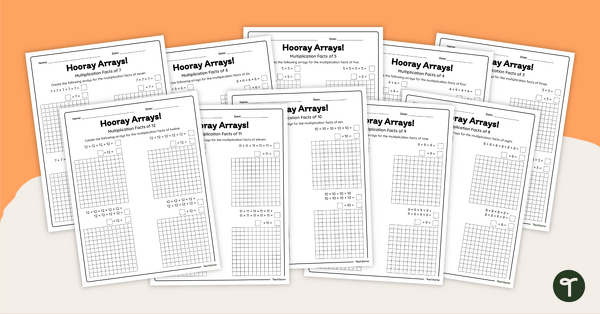
Hooray Arrays! Multiplication Worksheet Pack
Download this set of array worksheets to use when teaching your students how to relate addition and multiplication.
- Plus Plan
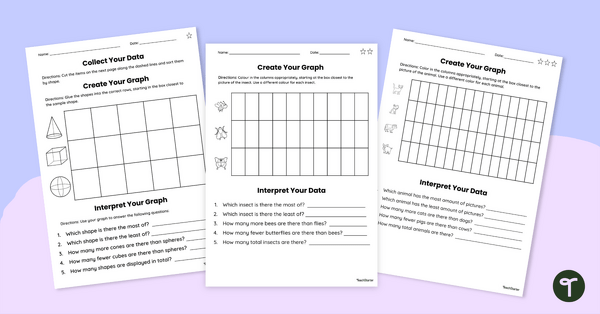
Data Collection Worksheet Set
Use this set of differentiated graphs worksheets to assess your students’ understanding of how data is collected, organised and presented.
- Plus Plan
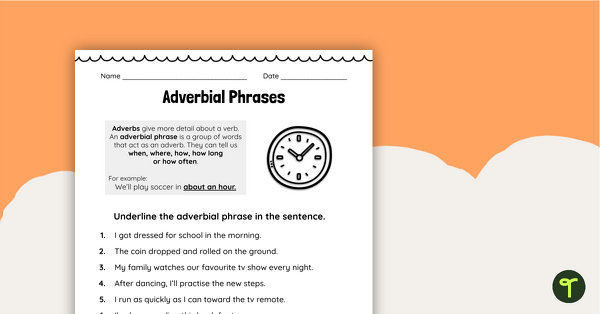
Find the Adverbial Phrases Worksheet
Use this simple yet effective adverbs worksheet to assess students’ ability to identify adverb groups (adverbial phrases) in sentences.
- Plus Plan
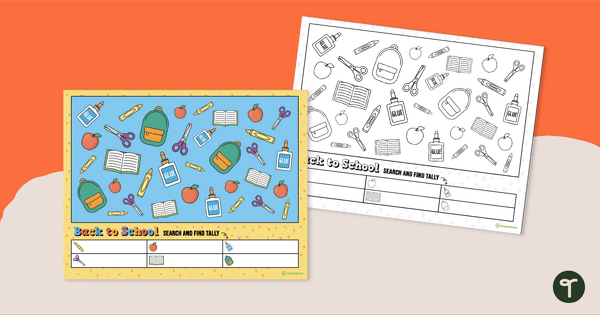
Search and Find – Back to School
Start the school year with a fun Search and Find maths activity for Year 1 students.
- Plus Plan
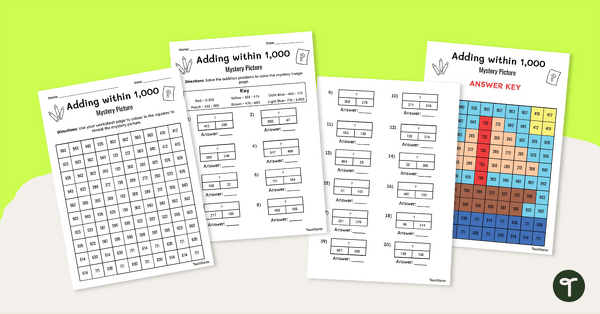
Adding within 1000 Mystery Image Reveal Worksheet
Practise using the bar model to work out addition sums within 1000 with this fun mystery picture reveal activity.
- Plus Plan
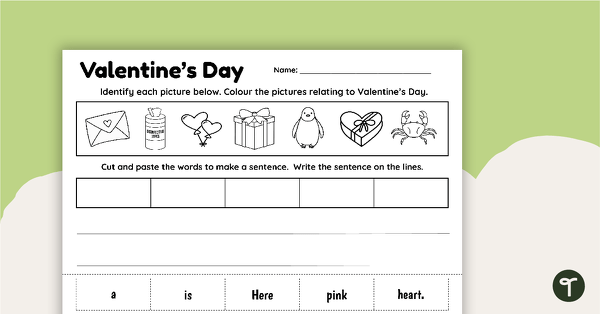
Valentine's Day Worksheet - Sentence Building
Build and write sentences about Valentine's Day with a cut-and-paste Valentine's Day worksheet.
- Plus Plan
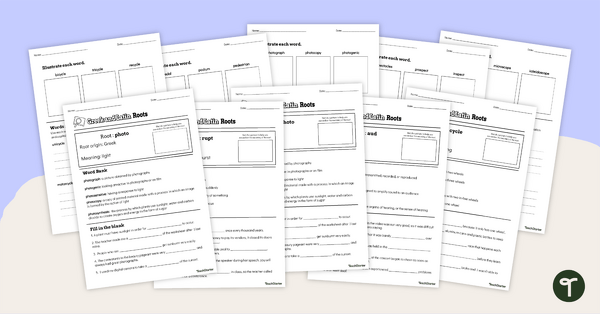
Greek and Latin Roots Worksheet Set
Practise using vocabulary containing Greek roots and Latin roots with these weekly root word worksheets.
- Free Plan
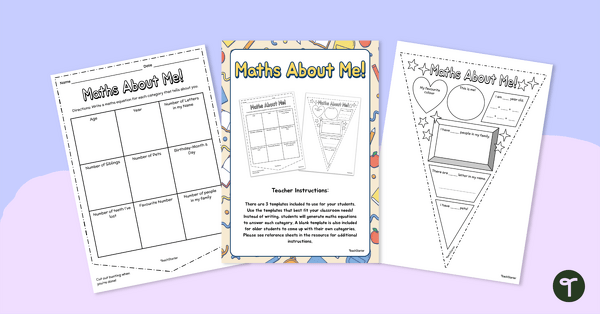
Maths About Me - All About Me Template
Get to know your new students with these Maths-themed All About Me templates.
- Plus Plan
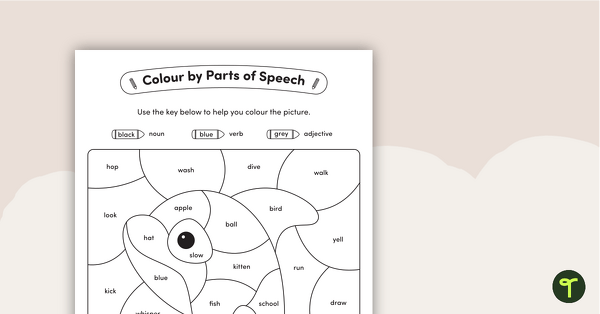
Colour by Parts of Speech - Nouns, Verbs & Adjectives - Whale
Review parts of speech by colouring nouns, verbs and adjectives on the whale.
- Plus Plan
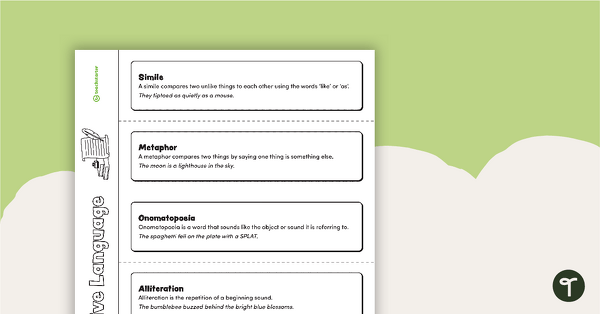
Figurative Language Flip Book
A flip book template for students to identify examples of figurative language.
- Plus Plan

Harmony Day Word Search – Upper
Words related to Harmony Day in a word search.
- Plus Plan
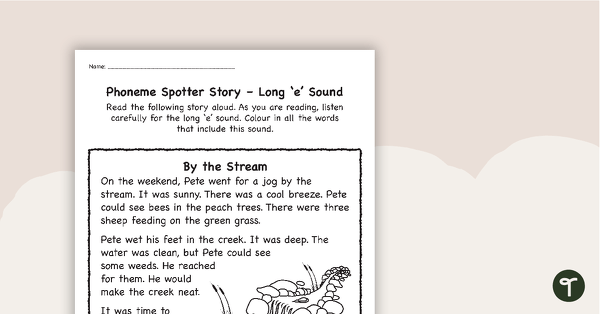
Phoneme Spotter Story – Long 'e' Sound
A decodable text featuring various graphemes that make the long 'e' sound.
- Plus Plan
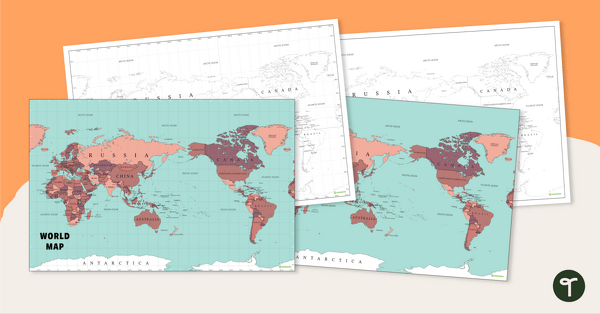
Australia-Centred World Map
Teach your students about the continents, oceans and countries of the world with this Australia-centred world map.
- Plus Plan
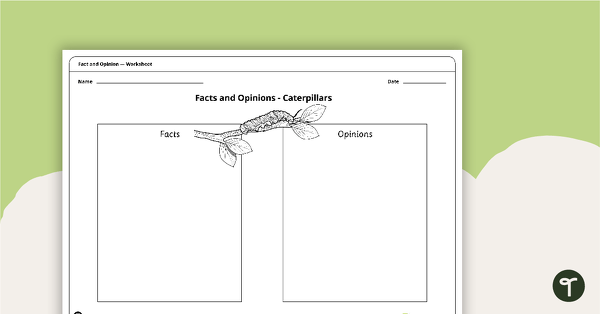
Facts and Opinions - Caterpillars
A fun activity for students to use when identifying facts and opinions about caterpillars.
- Free Plan

Drawing 2D Shapes Worksheet
A worksheet with questions regarding 2D shapes.
- Free Plan
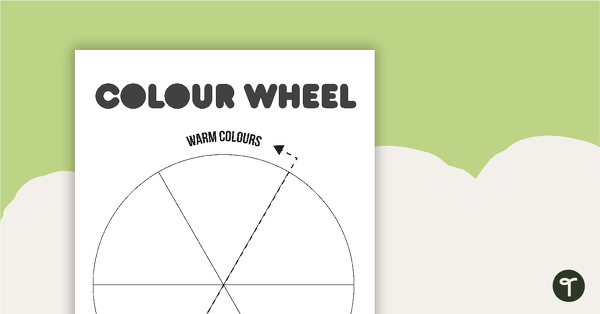
6 Part Colour Wheel and Colour Theory Worksheets
A set of colour theory worksheets featuring the 6 primary and secondary colours.
- Free Plan
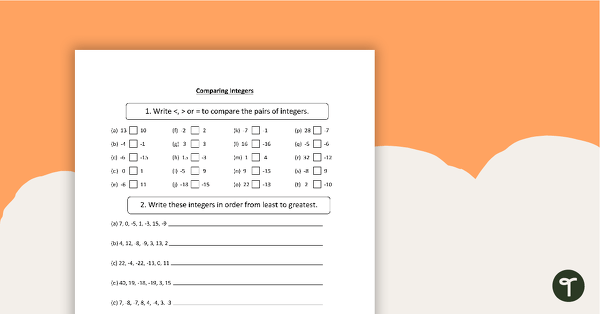
Positive and Negative Numbers Worksheet & Answers
Four pages of worksheets using positive and negative numbers.
- Plus Plan
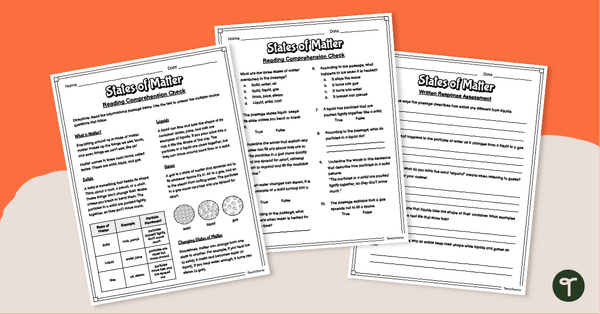
Comprehending Science - States of Matter Worksheet Pack
Use our Comprehending Science - States of Matter Worksheet Pack to review concepts related to solids, liquids, and gases.
- Plus Plan
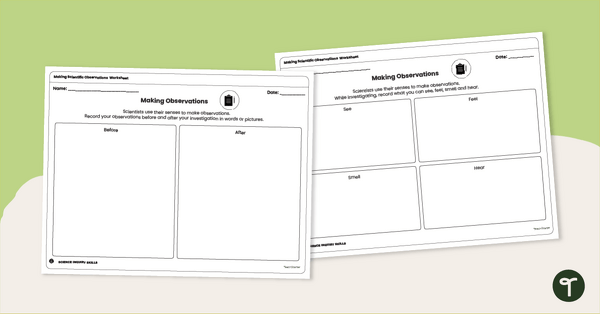
Making Scientific Observations Worksheets
Use this set of two worksheets to help your students record their own scientific observations during science experiments and projects.
- Plus Plan
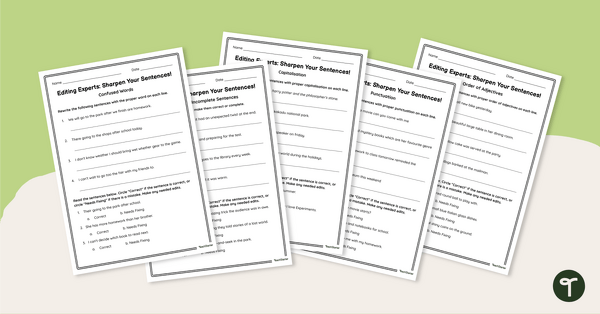
Editing Sentences – Year 4 Worksheets
Download these Year 4 editing worksheets to get your students identifying and fixing errors in sentences.
- Plus Plan
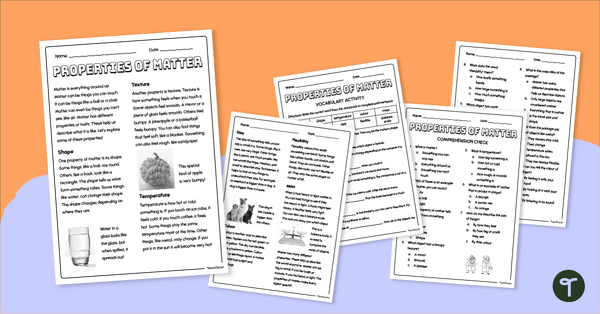
Properties of Matter Reading Comprehension Pack (Year 3)
Read and discover the properties of matter with a set of Year 3 Reading Comprehension Worksheets.
- Plus Plan
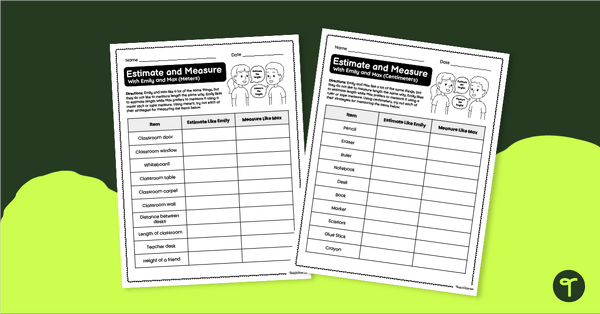
Year 3 - Estimate and Measure Length Worksheets
Estimate and measure length in metres and centimetres with a set of printable Year 3 maths worksheets
- Plus Plan
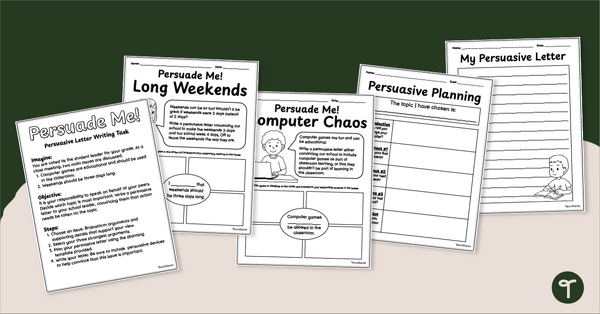
Persuasive Letter Writing Task - Year 2-3
Improve student composition with an engaging persuasive letter-writing task.
- Free Plan
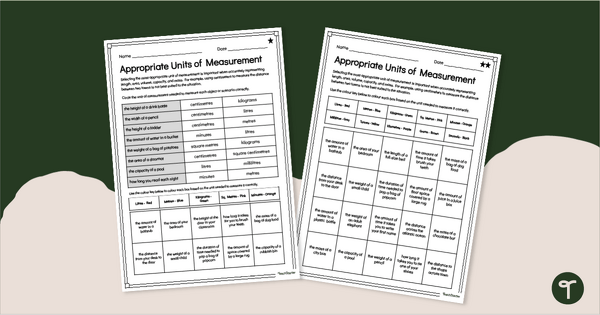
Appropriate Units of Measurement – Worksheets
Help students learn to choose appropriate units of measurement with a set of differentiated measurement handouts.
- Plus Plan
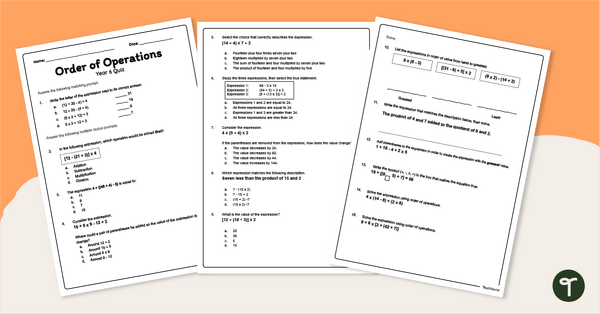
Order of Operations Quiz - Year 6
Assess your students' ability to write and evaluate numerical expressions by using the order of operations with this Year 6 maths assessment.
- Plus Plan

Build a Calendar - Following Instructions Worksheets
Practise following directions and using a calendar with a pack of 12 printable calendar worksheets.
- Free Plan
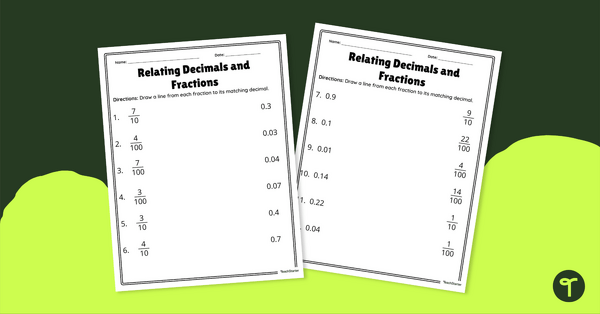
Relating Decimals and Fractions Worksheet
Practise matching fractions with a denominator of 10 and 100 to decimals and vice versa.
- Plus Plan
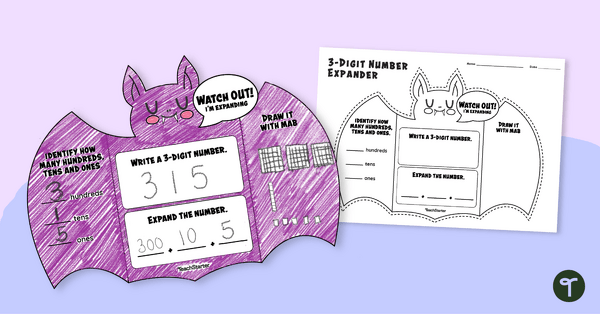
3-Digit Number Expander Template (Bat)
Explore 3-digit numbers with this cute foldable bat number expander for your students.
- Free Plan
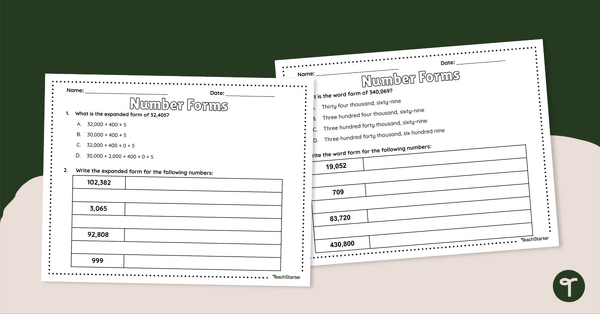
Number Forms Worksheet (Up to 5 Digits)
Help students practice recognising and writing numbers in word form and expanded form with this worksheet.
- Plus Plan
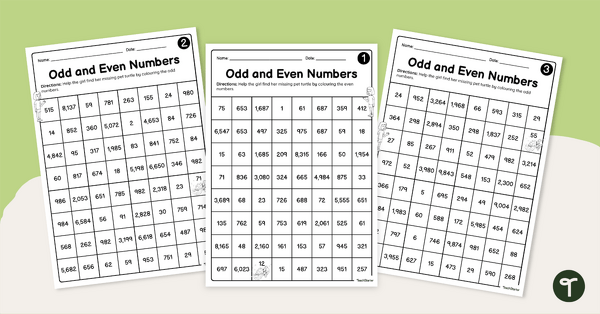
Odd and Even Maze Worksheets
Explore odd and even numbers with your students with these fun maze activities.